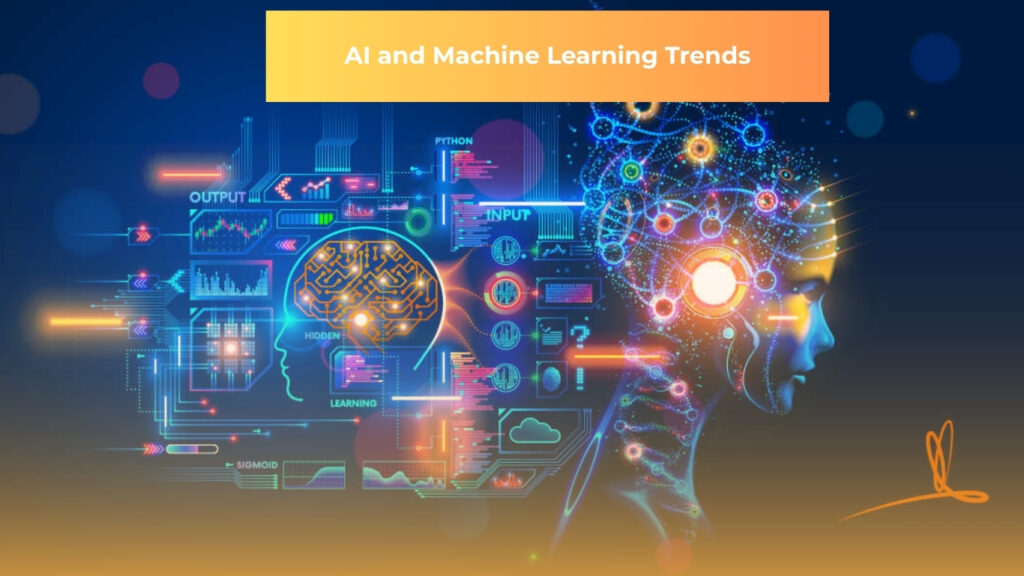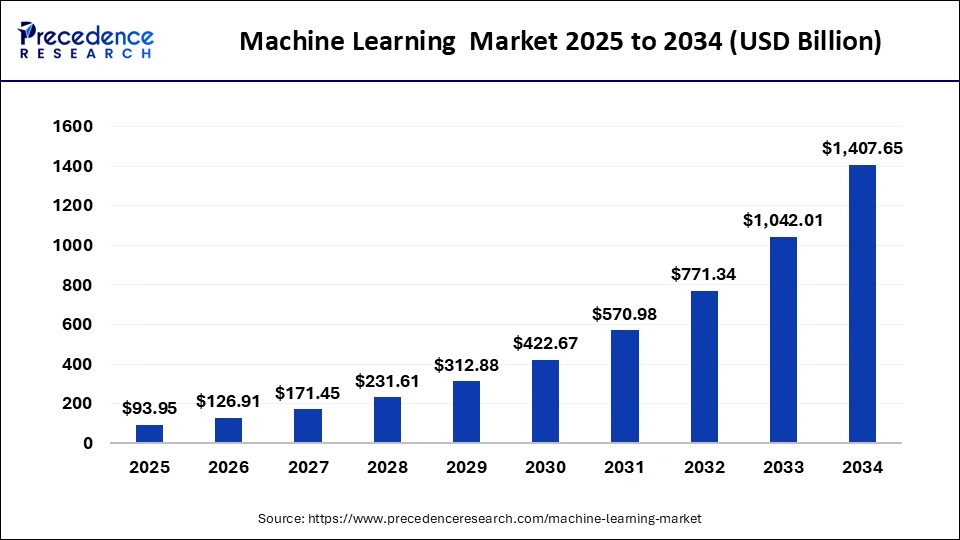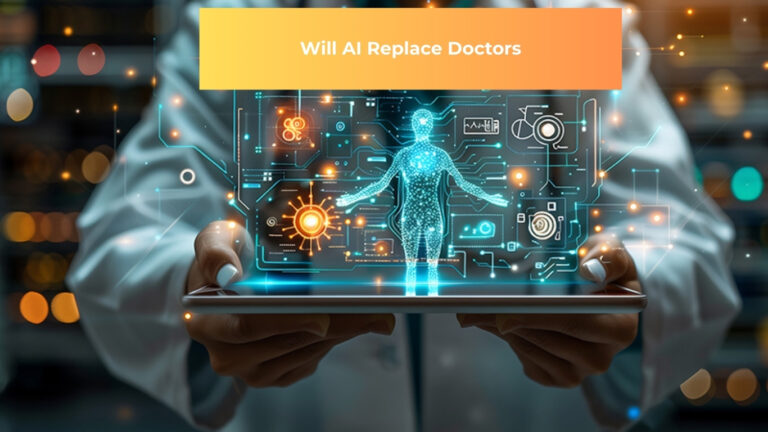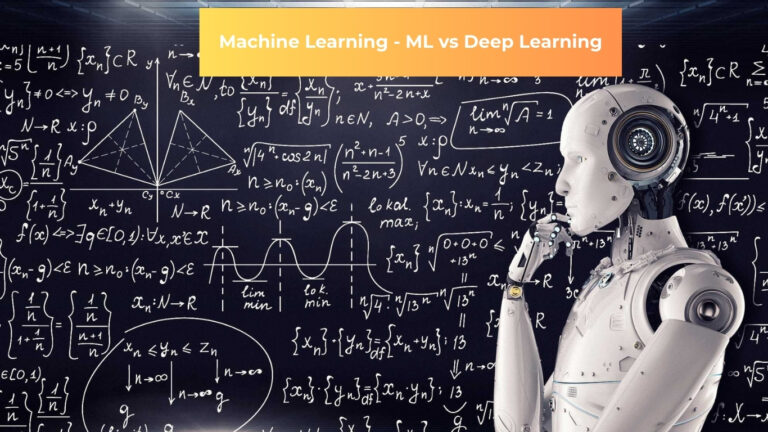This comprehensive guide distills the most important ai and machine learning trends and demonstrates how they translate into architectures, deployment patterns, governance models, and measurable business value.
The artificial intelligence landscape is shifting from pilots to production at unprecedented speed. With the global AI market reaching $391 billion in 2025 and projected to soar to $1.81 trillion by 2030, organizations now need a clear, technical blueprint to implement ai and machine learning trends at scale.
The Comprehensive AI and Machine Learning Revolution: 2025 Strategic Blueprint
In 2025, ai and machine learning trends reflect a decisive move from experiments to reliable enterprise platforms. Across industries, 70% of global enterprises now use AI in at least one business function, with 46% deploying machine learning in multiple areas as core to their business. Companies that succeed tie use cases to measurable outcomes, build data and model governance early, and design for scale from day one. The technical north star is a resilient architecture that unifies data pipelines, model lifecycle management, and real-time decisioning.
Machine learning and ai in business intelligence trends and opportunities are particularly pronounced, with 74% of companies reporting AI initiatives meet or exceed ROI targets. The most successful organizations achieve 20-30% productivity boosts for junior staff and 10-15% improvements for senior professionals through systematic implementation of ai and machine learning trends.
Deep Learning Architectures and Neural Network Technologies
Modern ai and machine learning trends are powered by advances in neural network design that prioritize both performance and practical deployment. Transformers dominate language and multimodal tasks by capturing long-range dependencies through self-attention mechanisms, enabling high-quality results on document analysis, code generation, and knowledge retrieval. The global machine learning market, valued at $93.95 billion in 2025, is projected to reach $1,407.65 billion by 2034, driven largely by these architectural innovations.
👉 Accelerate your AI journey today.
Convolutional networks remain essential for vision applications, driving quality control in manufacturing, shelf analytics in retail, and safety monitoring across industries. Manufacturing accounts for approximately 31% of the Edge AI market, with applications primarily in automation and predictive maintenance. In practice, enterprises often combine architectures into hybrids: transformers enriched with visual backbones, attention-augmented time-series models, and ensembles that trade complexity for robustness.
Performance engineering closes the loop with quantization, distillation, and hardware-specific optimizations to meet strict latency and cost targets. Edge AI has demonstrated potential to reduce traffic congestion by up to 30% through real-time processing capabilities, while retail inventory management sees 20% reduction in stockouts through localized intelligence.
Download our exclusive IT & AI playbook
MLOps Pipelines and Production Deployment Strategies
As ai and machine learning trends mature, MLOps becomes the backbone of reliable delivery at enterprise scale. The global MLOps market, valued at $1.7 billion in 2024, is projected to reach $39-129 billion by 2034, reflecting the critical importance of operational discipline in AI deployment.
Companies that adopt MLOps achieve an average ROI of 28% with potential up to 149%. They achieve these benefits through faster deployment cycles, better governance, and efficient collaboration among AI, data, and operations teams. Leading organizations like Ecolab cut model deployment cycles from 12 months to less than 90 days through systematic MLOps implementation.
A sound MLOps architecture starts with trustworthy data flows: structured and unstructured ingestion, versioned datasets, rigorous validation, and lineage tracking. Training pipelines are orchestrated with experiment tracking, feature stores, and automated hyperparameter tuning. Model risk is controlled through layered validation that tests accuracy, bias, robustness, integration, and security before production deployment.
Contact HBLAB’s expert team for strategic consultation
CI/CD extends beyond code to include data checks, drift detection, and model-to-baseline comparisons. Deployments are containerized, rolled out progressively, and governed by clear rollback policies. Everything is codified with infrastructure-as-code so teams can reproduce environments and scale predictably. Only 15% of AI models reach production without proper MLOps frameworks, highlighting the critical nature of operational excellence.
Federated Learning and Edge AI: Distributed Intelligence Systems
Two distributed patterns dominate ai and machine learning trends in 2025, addressing privacy concerns and latency requirements simultaneously. Federated learning trains models across multiple locations without centralizing sensitive data, while Edge AI pushes inference to where data is produced.
The federated learning market is estimated at $155.1 million in 2025 and projected to reach $315.4 million by 2032, growing at a CAGR of 10.7%. Organizations keep data local, share only gradients or parameters, and apply secure aggregation, differential privacy, and encryption to meet regulations while improving global models.
Edge AI market size was valued at $20.78 billion in 2024 and is projected to reach $66.47 billion by 2030, growing at a CAGR of 21.7%. Real-time detection on factory floors, in retail environments, or clinical devices reduces latency to tens of milliseconds and maintains operational resilience even with connectivity issues.

The European Data Protection Supervisor (EDPS) confirms federated learning is fully compatible with GDPR principles, minimizing personal data use, reducing transfer risks, and supporting privacy by design. Advanced deployments combine both approaches: hierarchical federated learning across edges and regional hubs, with cloud coordination for versions, telemetry, and global improvements.
Explainable AI and Enterprise Risk Management Frameworks

Trust has become as important as accuracy in ai and machine learning trends. Global consumer trust in AI has fallen from 61% to 53% over five years, with 60% of companies admitting trust issues with algorithmic models. Explainable AI (XAI) methods like SHAP, LIME, and integrated gradients make model behavior legible to auditors, regulators, and business owners.
The explainable AI market is forecasted to reach $24.58 billion by 2030, driven by regulatory requirements and business needs for algorithmic transparency. Organizations frame XAI work within recognized governance structures such as the NIST AI Risk Management Framework and align to regional requirements like the EU AI Act for high-risk systems.
In Spain, AI systems in workplace settings must be auditable with fines up to €35 million for non-compliance. The practical outcome is a lifecycle that documents intent, data, design choices, and evaluation criteria; monitors bias, fairness, drift, and security in production; and ensures human oversight where consequences are material. Clear accountability and repeatable reporting accelerate approvals and reduce time-to-value.
AI-Driven Business Intelligence and Analytics Transformation
Analytics is evolving from descriptive dashboards to predictive and prescriptive action through machine learning and ai in business intelligence trends and opportunities. 58.7% of enterprises already employ advanced business intelligence and analytics platforms, with 52.3% standardizing data across departments for consistency.
Real-time pipelines process streams through Kafka-class brokers and low-latency compute engines, while models forecast demand, flag anomalies, and recommend next best actions. Natural language querying capabilities are now used by 20% of organizations, democratizing access so non-technical users can explore data and trigger workflows.
Under the hood, automated quality checks, lineage tracking, and access controls protect data integrity and privacy. Organizations cite improving decision-making (56.2%), enhancing operational efficiency (55.7%), and reducing costs (50.2%) as top motivations for AI + BI adoption.
Sector-Specific Implementations and Technical Patterns
Healthcare illustrates how ai and machine learning trends deliver safer, faster care through specialized implementations. Transformers summarize complex medical records, CNNs read imaging studies with high sensitivity and specificity, and predictive models anticipate patient deterioration for early clinical intervention.
Financial services apply streaming fraud detection, graph analysis, and ensemble methods with strict interpretability requirements. PayPal’s machine learning algorithms analyze transaction location, device utilization, and user behavior to significantly enhance fraud detection capabilities.
Contact HBLAB’s expert team for implementation support.
Manufacturing pairs edge vision for defect detection with time-series forecasting for predictive maintenance. HCLTech’s manufacturing quality AI agent predicts and eliminates defects using Vertex AI with 90% accuracy, helping companies cut maintenance costs by 5%.
Retail leverages real-time personalization, dynamic pricing, and automated replenishment. YouTube’s recommendation system processes over 80 billion pieces of user information using large-scale neural networks, demonstrating the scale possible with systematic ML implementation.
AI Infrastructure: Hardware, Cloud, and Deployment Considerations
The infrastructure behind ai and machine learning trends mixes specialized accelerators with pragmatic cloud choices. 59% of machine learning practitioners cite Amazon Web Services as their most used cloud platform, reflecting the maturity of cloud-based ML infrastructure.
Modern GPUs and TPUs train large models efficiently, but cost management requires right-sizing hardware, mixed precision training, intelligent caching, and strategic sharding. Citadel Securities achieved 20% price and performance improvement using Google Cloud TPUs for market data modeling.
Hybrid architectures are standard: sensitive training or inference stays on-premises while bursty model training leverages cloud resources. North America dominates with 37.7% of the edge AI market, followed by strong adoption across regions. Kubernetes orchestrates containers with GPU scheduling, autoscaling, and unified observability.
Zero-trust networks, secrets management, model watermarking, and adversarial defenses protect assets. Compliance frameworks such as ISO 27001, SOC 2, GDPR, and HIPAA guide process and control design, ensuring enterprise-grade security and regulatory alignment.
Emerging Technologies and Next-Generation Implementations
Looking forward, ai and machine learning trends point to technologies expanding the frontier of enterprise capabilities. Quantum-inspired optimization aims to speed combinatorial problems and complex simulations, while neuromorphic chips explore ultra-low-power, event-driven computation for edge scenarios.

Multi-agent collaboration systems coordinate specialized models to solve complex, multi-step tasks with negotiation, tool usage, and planning capabilities. 78% of executives agree that digital ecosystems will need to be built for AI agents, indicating the strategic importance of agent-based architectures.
Autonomous AI platforms introduce self-monitoring, self-healing, and self-optimization capabilities, which demand stronger governance, safety constraints, and auditability to be enterprise-ready. These systems represent the next evolution in ai and machine learning trends, requiring sophisticated orchestration and control mechanisms.
HBLAB: Advanced AI and Machine Learning Implementation Partner
HBLAB positions itself as a strategic partner that translates ai and machine learning trends into dependable business outcomes through proven methodologies and deep technical expertise. Since 2017, HBLAB has been at the forefront of AI innovation, building world-class capabilities and fostering strategic partnerships with leading research institutions.
Our $300,000 investment in establishing Factory LAB with VNU’s Institute for AI demonstrates commitment to advancing ai and machine learning trends through collaborative research and development. This partnership focuses on generative AI, foundation models, multi-modal models, and expert systems to solve real-world business challenges across retail, education, and manufacturing sectors.
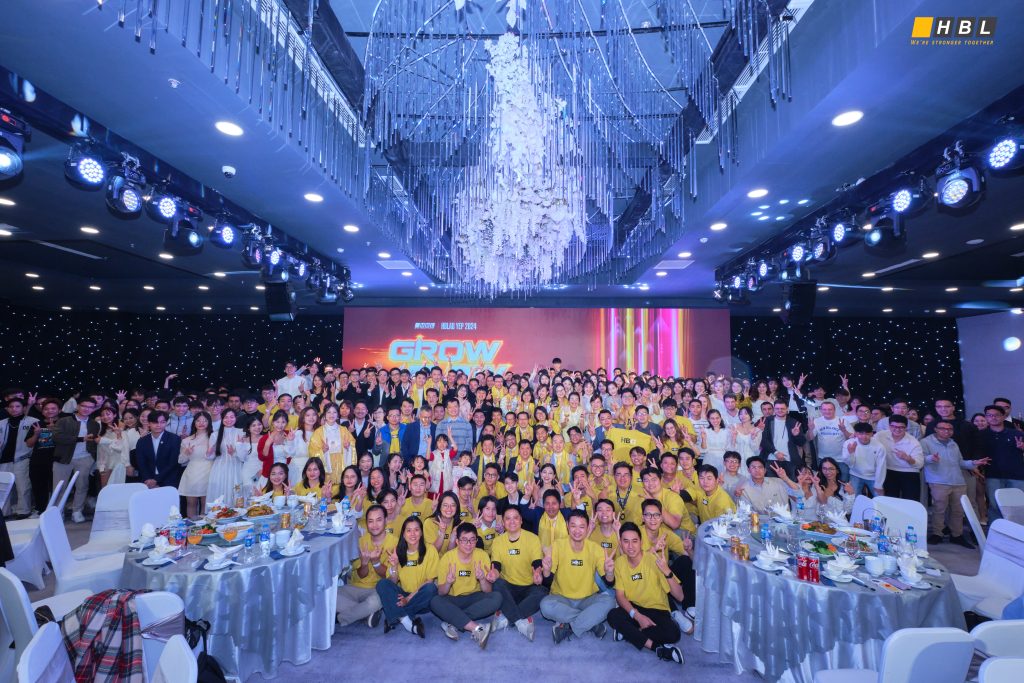
With 630+ professionals including 30% at senior level (5+ years experience), HBLAB delivers comprehensive AI solutions from strategic assessment through production deployment. Our CMMI Level 3 certification ensures disciplined, high-quality processes that align with enterprise standards and regulatory requirements.
The HBLAB approach blends architecture design, robust data pipelines, and systematic MLOps with domain-specific modeling across computer vision, natural language processing, recommendation systems, and time-series forecasting. Engagements typically begin with strategic assessment framing ROI and risk, progress through accelerated pilots proving value, and culminate in production systems with CI/CD, monitoring, and user enablement.
Our hybrid and edge deployment capabilities, privacy-preserving patterns, and enterprise security practices deliver measurable improvements in accuracy, latency, uptime, and total cost of ownership—without compromising compliance or operational control.
Technical Implementation Roadmap and Best Practices
Enterprises consistently succeeding with ai and machine learning trends follow a systematic implementation path that balances innovation with operational excellence. They begin with foundation assessment: auditing data quality, infrastructure readiness, security posture, and stakeholder alignment across the organization.
Target architecture design unifies ingestion, feature engineering, training, and serving components while choosing optimal cloud-on-premises-edge placement. Everything is codified for reproducibility, enabling consistent deployment across environments and scaling scenarios.
Focused pilot validation targets the highest-value use case, capturing baseline metrics for accuracy, latency, throughput, and cost. Organizations need 6-12 months to achieve strong ROI from AI initiatives, making systematic pilot execution critical for long-term success.
Production deployment introduces progressive releases, comprehensive guardrails, and 24×7 observability. Beyond launch, teams iterate toward lower latency, higher accuracy, and improved unit economics while expanding features based on real-world feedback and broadening portfolios to adjacent use cases.
Throughout implementation, teams enforce data governance, experiment tracking, model registries, robust access controls, encryption, and comprehensive audit logs. This ensures systems are not only performant and accurate, but also explainable, secure, and compliant with regulatory requirements.
Conclusion and Future Outlook
The central message of 2025’s ai and machine learning trends is clear: sustainable value comes from disciplined engineering and thoughtful governance, not isolated proofs of concept. 88% of enterprises now spend more than 5% of IT budget on AI, with many aiming for 25% or higher allocation, indicating the strategic importance of systematic implementation.
Organizations investing in MLOps, aligning to recognized risk frameworks, and designing for edge computing, privacy preservation, and enterprise scale will convert AI from experimental promise to durable competitive advantage. The next wave—multi-agent collaboration, neuromorphic acceleration, and quantum-enhanced optimization—will reward teams that master today’s foundational capabilities.
For leaders and engineers navigating machine learning and ai in business intelligence trends and opportunities, the imperative is standardizing playbooks, industrializing technology stacks, and measuring impact relentlessly. The window for competitive differentiation through ai and machine learning trends remains open, but only for organizations that execute with both technical excellence and operational discipline.
Frequently Asked Questions
1. What are the key AI and machine learning trends driving enterprise adoption in 2025?
The most influential AI and machine learning trends transforming enterprises in 2025 include MLOps standardization (expanding at a 43% CAGR), the rise of federated learning for privacy-preserving AI, and rapid edge AI deployment with a 21.7% market growth rate. Other major AI and machine learning trends involve explainable AI for compliance and AI-driven business intelligence transformation. Over 70% of global enterprises now integrate AI and machine learning solutions into their operational ecosystems.
2. How do machine learning and AI in business intelligence trends create competitive advantage?
Machine learning and AI in business intelligence trends are central to real-time decision-making and predictive analytics. These AI and machine learning innovations deliver automated insights that enhance operational agility and strategic planning. About 74% of companies meet or exceed ROI targets, realizing 20–30% productivity improvements and measurable cost efficiencies through data-driven transformation aligned with evolving AI and machine learning trends.
3. What is the current state of enterprise AI market growth?
The enterprise AI market is booming, reaching $391 billion in 2025 and expected to soar to $1.81 trillion by 2030 with a 35.9% CAGR. Machine learning, as a key pillar of AI and machine learning trends, is growing from $93.95 billion to $1,407.65 billion by 2034. North America and Europe maintain leadership, each holding 44% of the AI market share, driven by strong investments in enterprise automation and intelligent analytics capabilities.
4. How important is MLOps for scaling AI and machine learning trends?
MLOps plays a foundational role in scaling AI and machine learning trends across industries. Without structured operational frameworks, only 15% of AI models reach production. Organizations adopting MLOps experience ROI growth between 28–149%, reduce deployment cycles from a year to under 90 days, and lower infrastructure costs by 30%. MLOps ensures sustainable adoption of enterprise-level AI and machine learning systems with improved governance and performance tracking.
5. What role does federated learning play in current AI and machine learning trends?
Federated learning is emerging as a cornerstone of modern AI and machine learning trends. It fosters privacy-friendly collaboration by allowing AI training across decentralized data sources. This innovation meets strict GDPR requirements and shows strong adoption in healthcare, finance, and public sectors. The federated learning market is projected to grow from $155.1 million in 2025 to $315.4 million by 2032, marking it as a pivotal force shaping the secure future of AI and machine learning development.
6. How do edge AI capabilities support AI and machine learning trends?
Edge AI accelerates the evolution of AI and machine learning trends by delivering real-time data processing directly on devices, reducing latency and cloud dependence. The edge AI market will expand from $20.78 billion in 2024 to $66.47 billion by 2030. It supports advanced automation—cutting traffic congestion by 30%, minimizing retail stockouts by 20%, and powering autonomous operations across manufacturing, healthcare, and smart cities—making it one of the fastest-rising segments in AI and machine learning innovation.
CONTACT US FOR A FREE CONSULTATION
Read More:
– Dominate 2025 with a Winning AI Strategy Consulting Blueprint
– Machine Learning – ML vs Deep Learning: Understanding Excellent AI’s Core Technologies in 2025
– Will Cybersecurity Be Replaced by AI? Bold Trends Shaping Jobs in 2025
